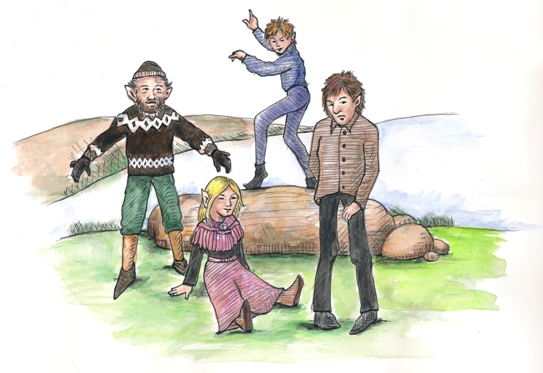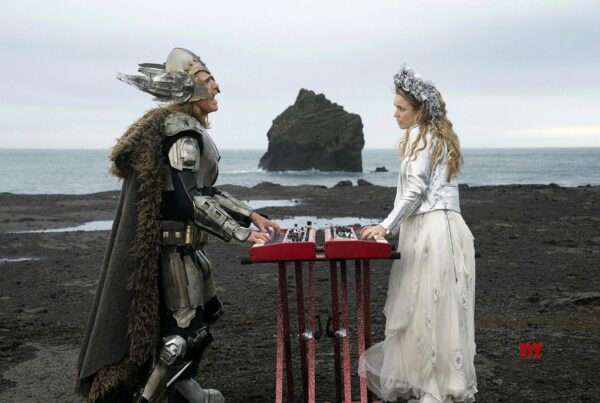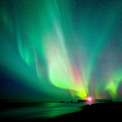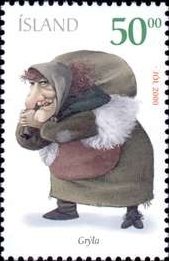
Gryla the Troll on an Icelandic postage stamp.
Huldufólk is what they call them in Iceland — the “hidden” or “secret” people. Not human beings per se, but rather fairies, elves and especially trolls. While the legendary creatures are part of general Scandinavian culture, their legacy is especially strong in Iceland.
“In Iceland, spirits are in the material world,” wrote Colin Nickerson in a 1999 article about Iceland folklore in the Seattle Post-Intelligencer newspaper. “Many an island nation believe in other-worldly beings.” Former Icelandic president Ólafur Ragnar Grímsson once quipped that, “Icelanders are few in number, so in the old times we doubled our population with tales of elves and fairies.”
Not far from the truth, because Iceland boasts a boatload of mythological characters and thousands of people who believe in their true-life existence. One poll found that more than half of Icelanders believe that it’s possible, probable or are absolutely certain that huldufólk are real. Construction projects are sometimes halted so as not to disturb a stone or other landscape feature where they might dwell.
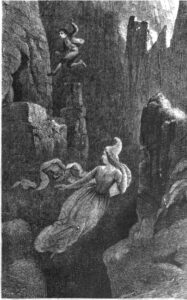
Female elf from the 1864 book Icelandic Legends.
Hidden people are an integral part of several Icelandic holidays. Instead of leaving cookies and milk for Santa, Icelanders are more likely to leave edibles for the elves who are said to stage wild parties on Christmas Eve. During the summer solstice, it’s thought that huldufólk will try to seduce anyone found sitting at an isolated crossroads during the shortest night of the year.
What’s the difference between the varies types of huldufólk?
Trolls are grotesquely ugly and extremely powerful beings — sometimes small, sometimes gigantic — who dwell in caves, mountains or beneath bridges and often harass humans. Think Shrek (although technically he’s an ogre, the English word for troll).
Fairies are tiny winged creatures in human form, most often female, and they can be very friendly and helpful to people. Think Tinker Bell in Peter Pan.
Elves, in the classical rather than modern cinematic sense, are full-sized, human-like creatures of extraordinary beauty and magical powers. They are often immortal, dwell in forests or springs, and can also be helpful to ordinary people. Think Legolas (Orlando Bloom) in Lord of the Rings.
Scholars say that Iceland’s fascination with mythological beings stems from its long isolation from the rest of European culture, as well as the Viking settlers who brought Nordic legends and Irish slaves who introduced Celtic myths.
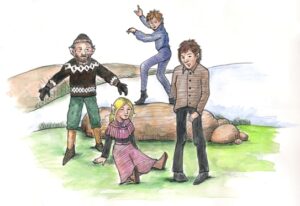
Miscellaneous elves. Courtesy Icelandic Elf School.
Others claim the proliferation and continued belief in supernatural beings reflects a harsh and often violent and often unpredictable Icelandic landscape (volcanoes, earthquakes, avalanches, etc) that settlers struggled to explain.
“It’s no wonder that the native people have assigned some secret life to the landscape,” says Anna Heida Palsdottir, an adjunct professor in literature at the University of Iceland. “There had to be some unseen powers behind such unpredictability, such cruelty.”
Iceland ProCruises passengers who want to learn more about the hidden people can sign up for a workshop at the Icelandic Elf School in Reykjavik. The enrollment fee ($57) includes storytelling, workbook, coffee or tea, freshly baked bread and Icelandic-style pancakes with jam and whipped cream.
